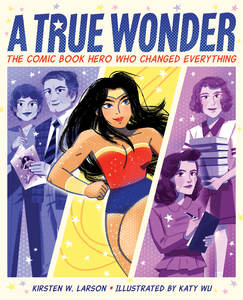2018 School Spending Survey Report
A True Wonder: The Comic Book Hero Who Changed Everything
Clarion.
Sept. 2021.
40p.
Tr $17.99. ISBN 9780358238423.
COPY ISBN
VERDICT References to Diana Prince’s actual adventures and feats are scattered, so readers will have to look elsewhere for her background and exploits, but this picture book tribute provides a strong motive for doing so.
ALREADY A SUBSCRIBER? LOG IN
We are currently offering this content for free. Sign up now to activate your personal profile, where you can save articles for future viewing





Be the first reader to comment.
Comment Policy:
Comment should not be empty !!!